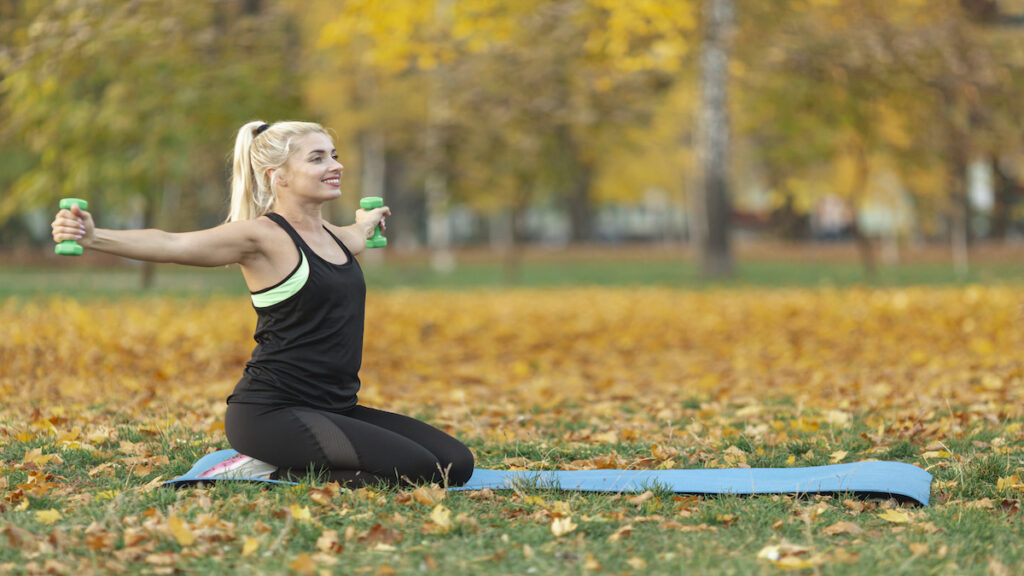Many people take the changing seasons and cooler temperatures as a sign to start slowing down training or outdoor exercise. But dedicated athletes—especially those in fall sports—know that there is no slowing down as the weather changes. Some actually prefer cooler temperatures and find it’s easier to boost endurance and performance.
Adapting to training during fall weather can still be difficult. Transitioning from hot summer workouts to chilly autumn conditions requires more than just layering up. With these tips, high school and college athletes can make small adjustments to their training routines to stay on the path of success.
1. Plan for a Longer Warm-Up
Athletes know to never skip a warm-up. Fall weather often means cooler weather, so a longer warm-up is necessary. When the temperature drops, muscles and joints need more time to loosen up and prepare for work. Jumping right into a run or drills without a proper warm-up increases the risk of injury.
A longer workout also allows for the lungs to have time to adapt to breathing in cold air.
Before getting to the gym, going out for a run, or arriving at practice, set aside some extra time to get the body moving and heart rate up. It’s great to start with five to ten minutes of some form of cardio to raise core temperature, such as a brisk walk or light jog.
Then get in some dynamic stretches such as leg swings, arm circles, and walking lunges to improve mobility and activate key muscle groups. Finally, end the warm-up with activation drills. Exercises like high knees and butt kicks are great movements for firing up your muscles. These are ideal for fall sports like soccer and football that require explosive movements.
2. Dress for Fall: Layer Up
Cooler weather workouts are difficult because the body may be cold, but then there is a risk of sweating and overheating once the body is warm. The best strategy is to dress in layers.
This should include a moisture-wicking base layer to keep warm, yet the fabric will pull sweat away from the skin. A middle layer further adds warmth but should be lightweight. Avoid bulky clothing that can make it uncomfortable or hard to move. On those cooler days, add an outer layer like a breathable jacket or a vest.
Remove layers as the workout progresses when feeling warm.
3. Avoid Progressing Training Too Quickly
Chilly weather makes it easier for athletes to go harder, faster, and longer in their outdoor workouts without the heat and humidity slowing them down. While it’s tempting to increase training intensity or duration, doing too much too soon can run the risk of overtraining and the injuries linked to it.
When transitioning from a summer base to the fall sport season, make sure to talk to your coach about increasing workouts by 10 percent. This might mean a 10 percent increase in weekly mileage.
Always make time for a rest day and listen to your body when it’s time to slow down or take a break during training.
4. Make Hydration—And Food—A Priority
It’s important to stay hydrated before, during, and after workouts. Hydrating even when athletes are not feeling thirsty is important. Dehydration negatively affects performance and can cause serious injury. Wake up and drink first thing in the morning, take small sips during the day, and have water on hand when training. For longer practices and runs, consume an electrolyte drink.
It’s also important to follow a healthy, well-balanced diet that includes protein for muscle repair, carbs for energy, and fruits and vegetables.
5. Make Recovery Part of the Routine
It can be hard to train in cooler fall weather. Motivation can be low when it’s chilly, and the weather can be hard on muscles and joints. Plan accordingly to get in workouts, but schedule in rest and recovery to be able to tackle the next workout even stronger. Make sure to stretch, use a foam roller, and work on mobility, which are all ways to recover.
An active recovery day may include a short walk or yoga, but there is nothing wrong with taking a day off. Take advantage of the dark early evenings and get at least eight hours of sleep a night.

